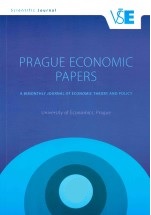Risks and Transfer Pricing Regulation at the Multinational Enterprises’ Routine Units: A Literature Review
Risks and Transfer Pricing Regulation at the Multinational Enterprises’ Routine Units: A Literature Review
Author(s): Tomáš BuusSubject(s): Social Sciences, Economy
Published by: Vysoká škola ekonomická v Praze
Keywords: multinational corporation; multinational enterprise; routine unit; stakeholder; risk; profit shifting
Summary/Abstract: Multinational enterprises (MNE) allocate valuable intangible assets and strategic functions to the strategy units (usually parent companies) for that allows them to impropriate the majority of the profits there and protect those assets from subsidiaries’ risks. The subsidiaries are frequently routine units. Subsequently, the routine units receive low reward, as they perform only routine functions. The OECD transfer pricing guidelines support that practice to the detriment of go- vernment budgets and public by considering the routine units as the low-risk ones. This paper reviews the relevant literature and shows that the traditional view of risk and profit allocation between strategy and routine units is inconsistent with their relative risks, resp. with relative risks of MNE’s subsidiary and independent company. The long-term perspective of MNEs’ members’ downside risks provides correct information for transfer pricing regulation and fiscal authorities. Results of this paper enable proposal of the transfer pricing risk analysis targets and tools.
Journal: Prague Economic Papers
- Issue Year: 27/2018
- Issue No: 6
- Page Range: 621-636
- Page Count: 16
- Language: English

